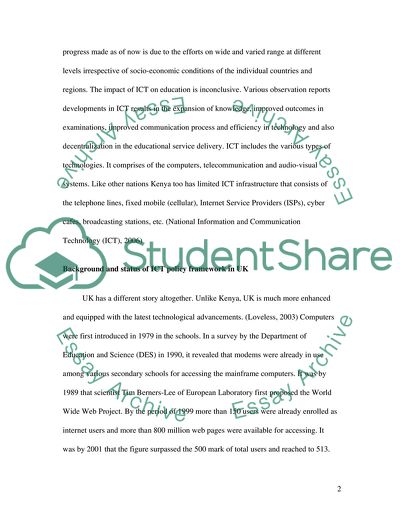Cite this document
(Comparison on National Policies of ICT in Education in Kenya and the Research Paper, n.d.)
Comparison on National Policies of ICT in Education in Kenya and the Research Paper. Retrieved from https://studentshare.org/information-technology/1726218-kenya-and-united-kingdom-a-comparison-on-national-policies-of-ict-in-education
Comparison on National Policies of ICT in Education in Kenya and the Research Paper. Retrieved from https://studentshare.org/information-technology/1726218-kenya-and-united-kingdom-a-comparison-on-national-policies-of-ict-in-education
(Comparison on National Policies of ICT in Education in Kenya and the Research Paper)
Comparison on National Policies of ICT in Education in Kenya and the Research Paper. https://studentshare.org/information-technology/1726218-kenya-and-united-kingdom-a-comparison-on-national-policies-of-ict-in-education.
Comparison on National Policies of ICT in Education in Kenya and the Research Paper. https://studentshare.org/information-technology/1726218-kenya-and-united-kingdom-a-comparison-on-national-policies-of-ict-in-education.
“Comparison on National Policies of ICT in Education in Kenya and the Research Paper”, n.d. https://studentshare.org/information-technology/1726218-kenya-and-united-kingdom-a-comparison-on-national-policies-of-ict-in-education.


